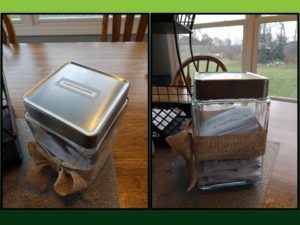“Yes – This is exactly what I need to do…I can do this!” We have all been there at some point. We start out with a great deal of energy and excitement as we head into our journey towards that next big objective in our lives.
Many times, we encounter some catalyst for change brought on by a meaningful event in our lives: A significant change in our personal life, the insightful guidance from a friend or family member, the ideas of a great speaker, or some helpful concept we read in a book or on social media. Some situation triggered our response to get motivated, to take on that next challenge, and go after another well intentioned goal. We take off from that mountain top “high” with a great deal of enthusiasm and optimism about reaching our objective.
After traveling along into our journey, we eventually find ourselves off the mountain top experience and into the valley. The valley we encounter between that initial high and the journey towards our objective is often difficult. The ability to clearly see our ultimate objective gets more challenging and somehow the journey does not seem as exciting as when we set off from the mountain top.
As we continue to work on building and strengthening our character, how we manage our mindset (or the voice inside our head) becomes a critical choice we need to make as we walk in that dark and often lonely valley.
We can all probably relate to a few “valley” moments in our lives:
- After some time of progress on our new diet and exercise routine, things slow down and we notice a few pounds creeping back on the scale
- After some time in a new job, when our coworkers and boss don’t seem as supportive as they did at the start and the work is no longer exciting
- When that “sweet bundle of joy” we brought home from the hospital becomes an angry and rebellious young adult
- When the “I do” in marriage becomes “when you know what freezes over”
- When our poor choice brings about an unfortunate outcome and there is no hiding from the consequence
On a much lighter note, but still a meaningful, teaching moment about the valleys of life, is the new puppy in our home. After a few weeks with a cute puppy running around in the yard and plenty of time and people around the Thanksgiving holiday to share the workload are suddenly replaced with a winter blizzard, post-holiday busy schedules, and that familiar nighttime question, “Ok, whose turn is it to take the dog out?”, you can find yourself wandering around in the dark a few too many times.
We could all come up with a good laundry list of excuses when we are struggling in the valley and some of them are completely legitimate. Storms do come in life and destroy much of what we tried to build. Tragedy does strike. People do fail to keep up their end of the contract. However, for most of our journey, the consistent application of timeless and universal principles like faith, perseverance, commitment, and hope will rarely cause us to fall short of crossing through the dark valley and reaching the next mountain top high in our journey.
Here are a few ideas to help us move through the valley as best as possible and up to the next mountain top:
- Set priorities. We cannot do everything. It is important to be selective and declare a clear “yes” or a clear “no” or at least “not now” so our energy can be channeled into a few important goals.
- Plan and prepare. “Winging it” or “going with the flow” seems to only work for cool people. For the rest of us, winging it is often a losing strategy. We need to be intentional about outlining the direction we wish to go and the habits we need to instill to ensure we keep heading in that direction. Our daily habits, especially the voice we listen to in our head, will help keep us on our intended direction even in the darkness of the valley.
- Build hope through the momentum of habits. The mechanical process of day in, day out living by our chosen habits builds momentum. When our habits are guided by principles like perseverance, commitment, and loyalty, we build hope through the positive momentum of moving forward for another day through the valley.
As we work our way across a few valleys in our life with the help of sticking to habits based on principles, we build and strengthen our character and Character Creates Opportunity to reach that next mountain top milestone in our journey.








